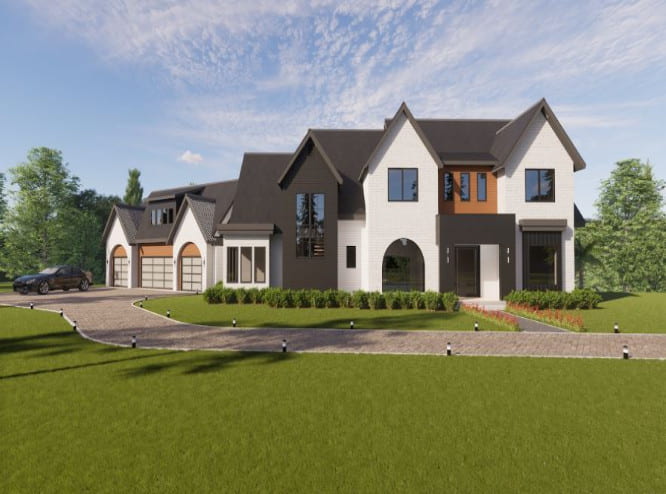Timelessness, warmth, and appeal are some of the traits that make the Transitional Architectural style unique. From time to time, we come across clients who know very little about home styles and what they want.
After a little research, many will point to the transitional style as their design inspiration. To them, this home style is a wonderful interpretation of their lifestyle. But what does this home style entail, and will it actually work for you?
To help you out, I will write about the transitional architectural style, what it entails, and if this home style will actually work for you. So, without taking too much of your time, let’s dive right into it, shall we?
What is the Transitional Architectural Style?
The best way to define or describe this home style is as a blend or a mixture of traditional and modern styles. Bringing together design pieces of these two contradicting styles and blending them into a singular and balanced design.
This architectural style balances luxury and comfort, masculine and feminine, old and new, and blends them so well together. The end result of this blend is a home style that is simple and sophisticated.
What are the key elements of the transitional architectural style?

The transitional style mixes various opposite elements in a harmonious way. Because of its versatility, this style may carry different aesthetics. However, there are a few distinct indicators that should be present, no matter the elements used. Some of these key indicators include the following;
- A neutral colour palette to evoke a clean and serene atmosphere
- A mix of textures (natural oaks, polished fossils, grass cloth, and white plaster) adds to the visual interest of the home
- Emphasis on functionality – The transitional homes design perspective places function over form. You have a beautiful formal sitting room to enjoy conversation with visitors, beautiful club chairs to enjoy cocktails, etc. These homes are built to ensure comfortable indoor living
- Modern lighting, such as multi-pendant chandeliers
- Artwork or wallpapers
- Mix metal accents
- Clean lines with minimal clutter
Why you will love the transitional style
1. Your home is not locked to one era
You will love this home style because your home will not be locked to one era or a particular style. Rather, it would incorporate two completely different styles in a harmonious manner that will not come out looking too stark.
2. Versatile home decor
As I have cited in this article, this architectural style may carry different aesthetics. This is because freedom can be found in the decor of this home style. You can try different mixes until you get the interior that is just right for you.
3. It is unique
Transitional homes are unique since they are easier to express with decoration. Clients have the freedom to express and create a home that represents them, their tastes, and their lifestyles. No two transitional-style homes are the same, so you are assured your home is unique to you.
4. Transitional homes are always appealing
When done rightly, these homes are certain to get the attention they deserve. The impression that these homes provide is bound to create long-lasting conversations; even long after guests have left, these homes are still the topic of discussion.
But, of course, there are drawbacks to the transitional architectural style
The mixes and blends in this unique style can be a worry. Some of the drawbacks or challenges worth mentioning include the following.
1. Color and pattern
If not done properly, the color and pattern in this style may come off as competing. The eyes won’t know what or where to focus on as the rooms may appear disjointed. To avoid this, you want to make sure that the color and patterns flow together in order to get a cohesive look.
2. Costly
Another drawback to this architectural style is the cost associated with it. Obviously, something this unique and highly sought after will likely cost a lot. So, you are advised to prepare financially before you decide on this home style. If you are on a tighter budget, then you can go for a cheaper or less elaborate home style.
FAQs
What colors are best for transitional homes?
Neutral or muted colors like beige, tan, off-white, ivory, cream, khaki, vanilla, and taupe are often recommended.
What materials are used in transitional homes?
Wood, glass, rattan, leather, suede, and chenille are common materials used in this home style.
When was the transitional architectural style founded?
The transitional architectural style made its first appearance in the 1950s.
Transitional architectural style might just work for you
The transitional architectural style is about mixing or blending two opposite design styles in a way that matches your lifestyle and personality. It is perfect for potential homeowners who are torn between traditional and modern architectural styles or who want something entirely unique.
With this style, you are not tied to one era or one style. Rather, you have the freedom to incorporate pieces of other styles till you find one that is unique to you. You can see the Milton GA Project, a transitional-style home built by Samkins Construction Lnc.
Decided yet? Still confused? Get in touch with us now!